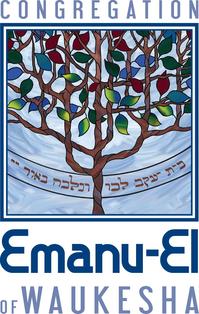Shavuot, the Holiday of Weeks, is one of the three pilgrimage holidays, along with Pesach and Sukkot. These are the holidays on which the whole Jewish people would come to Jerusalem in ancient times, when the Holy Temple was there, and would offer animal and grain sacrifices.
Shavuot is observed at the end of the counting of the Omer: the counting of seven weeks (actually 50 days) from the first day of Pesach. At the beginning of the counting, Jews would bring an Omer (Biblical measure) of grain from the first barley harvest to the Holy Temple, and at the end would bring an Omer of grain from the first wheat harvest. The seven weeks in the counting of the Omer are what give the holiday its name.
A fundamentally agricultural holiday, Shavuot is also called the Harvest Holiday and the First Fruits (Bikkurim) Holiday, commemorating the custom of bringing offerings to the Holy Temple from the first fruits of the harvest and the first animals born to the flocks. This agricultural aspect of the holiday was retained even after the destruction of the Holy Temple: among the symbols of the holiday are the seven species with which the Land of Israel is blessed – wheat, barley, grapes, figs, pomegranates, olives and dates.
Shavuot is also the holiday of the Giving of the Torah. According to tradition it was on this day that the Torah was given to the Jewish people at Mt. Sinai.
During the period when most of the Jewish people was in the Diaspora and could not celebrate Shavuot as an agricultural holiday, the religious traditions took precedence. With the renewal of Jewish settlement of the Land of Israel, the new farmers (mainly in the kibbutz and moshav cooperative farming communities) reinstated the agricultural aspect as the main focus of the holiday, and a rich and colorful tradition developed around ceremonies commemorating the bringing of Bikkurim.
Shavuot is also connected to the Biblical Book of Ruth, which relates the story of Ruth the Moabite, who joined the Jewish people and who is the ancestor of King David. This story is connected with Shavuot as it takes place during the wheat harvest, around the time of Shavuot.
There is also a connection between the Davidic royal dynasty and the holiday of the giving of the Torah. According to tradition, David was born and died on Shavuot. The story of Ruth emphasizes the fact that every person can join the Jewish people and accept the Torah, even if he is from another nation, even an enemy nation.
Holiday Customs
Shavuot traditions
Shavuot night prayers – One custom connected with tradition is that the Torah was given on Shavuot: thus on the night of the holiday, it is customary to learn Torah all night long at the synagogue in order to prepare oneself for receiving the Torah, just as a bride prepares herself to receive her groom. The texts that are studied vary from one community to another, but usually include passages from the Torah, the Mishna and the Zohar.
The reading of the Book of Ruth – On Shavuot day the Book of Ruth is read in synagogue and the reading is accompanied by various liturgical songs connected with the precepts in the Torah.
Eating dairy products – This is a relatively recent tradition, whose origin is unclear. Many Israelis who are not specifically religious have adopted this custom and hold fancy meals based on the many dairy products available in Israel.
From: https://info.goisrael.com/en/shavuot-286931
